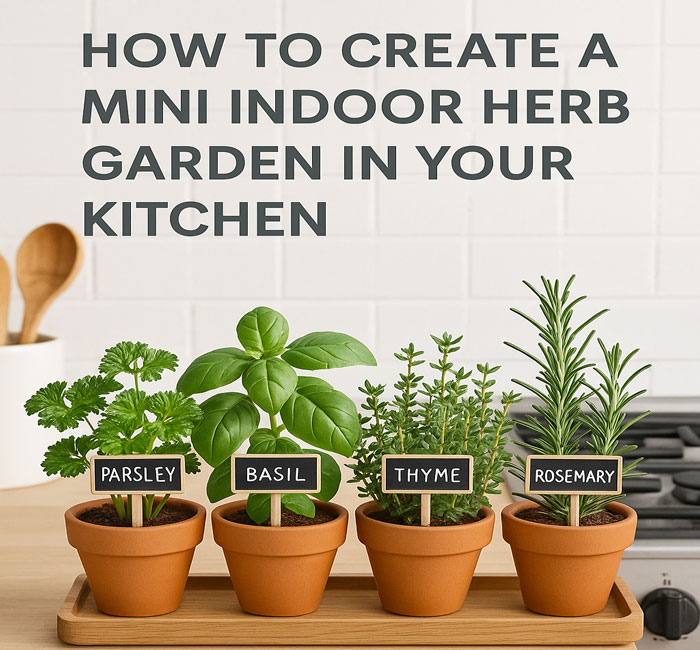Having a mini herb garden in your kitchen is more than just a trendy home project—it’s a practical and enjoyable way to keep your meals fresh and flavorful. With just a little space, some sunlight, and a few pots, you can grow herbs right where you cook.
It adds beauty to your kitchen, makes your food taste better, and brings a touch of nature indoors. Whether you’re a beginner or someone who just loves greenery, starting a mini herb garden is easier than you might think.

Start with the Right Herbs
The first step is choosing which herbs to grow. It’s a good idea to start with herbs you use often in your cooking. Common choices include basil, mint, parsley, rosemary, and thyme. These herbs are known to grow well indoors and don’t require too much care. You don’t have to grow many at once—just two or three can be enough to get started. As you get more comfortable, you can slowly add more varieties based on your needs and space.
Find a Bright Spot
Herbs love sunlight, so finding a good spot is important. A windowsill that gets several hours of direct light during the day is ideal. If your kitchen doesn’t get much natural light, you can use a small grow light to help the plants grow well. Avoid placing your herbs in spots that are too hot, such as right above the stove, or too cold, like near an air vent. A consistent, bright space will help your plants thrive.
Choose Suitable Containers and Soil
You don’t need large pots to grow herbs indoors, but the ones you use should have drainage holes. This helps prevent the roots from sitting in water, which can cause rot. You can use regular clay or ceramic pots, or even repurpose containers like cups or jars—as long as there’s a way for water to escape. For soil, use a potting mix meant for indoor plants. It should be light, not compact, and allow water to drain easily while still holding enough moisture for the roots.
Watering and Care Tips
Taking care of indoor herbs is simple, but it helps to pay attention to their needs. Water your herbs only when the top layer of soil feels dry. Each herb has slightly different needs—some prefer more moisture, while others like it drier.
Overwatering is one of the most common mistakes, so always check before you water. Gently remove any dried or yellow leaves to keep your plants looking healthy. And remember to rotate the pots every few days so the plants grow evenly toward the light.
Harvesting Your Herbs
Once your herbs are growing well, you can begin harvesting them. The key is to trim a little at a time. Picking the top leaves encourages the plant to grow fuller and bushier. Don’t remove too much at once—just enough for your recipe. Even if you’re not cooking with the herbs every day, regular light trimming helps keep them in good shape and prevents them from getting too tall or thin.
Adding Freshness to Your Cooking
One of the best things about having herbs in your kitchen is how easy it becomes to add fresh flavor to your meals. A few basil leaves can transform a sandwich or pasta. A bit of mint can freshen up your water or tea.
Chopped parsley brings brightness to soups and salads, while rosemary and thyme add depth to roasted dishes. When the herbs are right there on your windowsill, you’re more likely to use them—and enjoy them.
Also read:-
